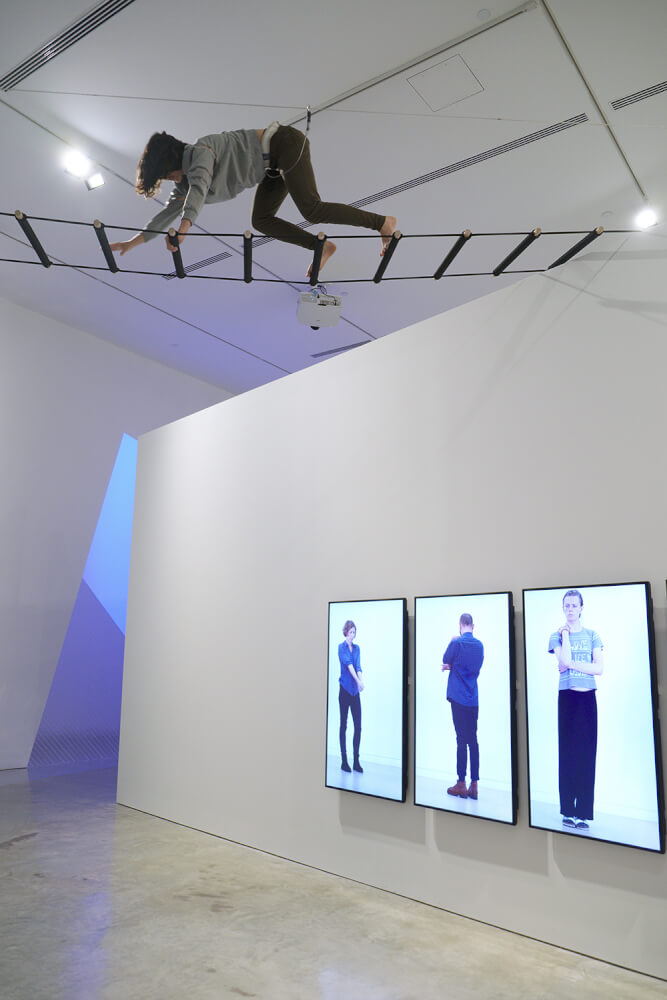“You can expect an exhibition that will remind us that we are feeling, sensing humans with beautiful transgressive bodies that defy the strict moral codes and civic structures of contemporary society.” – Emily Cormack
Melbourne-based Aucklander Emily Cormack has been appointed to curate the prestigious TarraWarra Biennial next year, having been invited by director Victoria Lynn after she saw her last exhibition, Primavera 2016, at Sydney’s Museum of Contemporary Art. I ask Emily what we can expect from her upcoming show.
“You can expect an exhibition that will remind us that we are feeling, sensing humans with beautiful transgressive bodies that defy the strict moral codes and civic structures of contemporary society,” she says. “Our bodies are the ultimate anarchists operating according to their own processes, in defiance of our attempts to control and legislate them. The sculpture and film works in this exhibition will affect the viewer, and will interact with each other as if in a dance or a public gathering variously clustering, withdrawing or reaching out. They will embody the errant will of the artist.”
Emily says that she is drawn to the “transmissions that occurs between the artwork and the viewer”: “This magical exchange, which is a rebound between will, intention, context, energy and honesty, is persistently interesting to me, with many of my exhibitions attempting to unravel and understand this process in one way or another.” Though her ideas may shift, Emily is consistently inspired by artists who manage to “distill key processes or essences within the human condition into a single object or material”. She compares some materials to magic words, their apparent simplicity belying “a complex network of ideas and essences that transmit straight to the gut”.
Her method of curating is collaborative and exploratory, and involves coming up with the concept before researching and meeting the artists in order to select those who “feel a synergy with the idea”. Then they must establish the most appropriate work to show and devise the exhibition’s architecture and layout in a manner that “best facilitates the transmission of meaning”. “It must be a collaborative, holistic process,” insists Emily. “I feel the viewers’ passage through space influences their reading of an artwork almost as much as the work itself. Human perception builds cumulatively, and so as a curator I must work with this structure, unravelling a story proprioceptively, working with space, depth and movement to encourage a visitor’s engagement with the work.”
The biggest challenge, she adds, would be to work with an institution that “didn’t understand the crucial role that context plays on the reading of an artwork”. I ask Emily about her dream artists or galleries to work with.

“I tend not to dream, but prefer instead to make plans,” she says. “First on my New Zealand to-do list is New Zealand at Venice, which I have several ideas for. The work selected would draw the buried energies of this magical, ancient city up through the mud and silt, accumulating metaphors and revealing connections along the way.” Another exhibition on the wish list would be The Auckland Triennial (“if it still existed”), as the city will always be her home town and is the source of many of her ideas: “If I had the opportunity, I would curate an exhibition that drew out metaphors to do with thresholds; Auckland’s 72 volcanoes, the porous crust of the earth, the threshold of biculturalism, the threshold of visibility and so many other thresholds that define New Zealand identity.”
The freelance writer and curator has worked in Europe as well as throughout the Asia-Pacific region. I ask about differences between the cultures.
“Whilst there are certainly differences between art made in Asia, the Pacific and Europe, to try to describe these differences in such a short space would be reductive and therefore inaccurate,” she says. “Suffice to say, that different art making serves different purposes in different socio-geographic contexts, and that many of these differences have come from the varying degrees of institutional or societal support over hundreds of years. For example, art and philosophy are discussed over the family breakfast table in many French households, whereas in New Zealand, contemporary art has to continuously defend its very existence, which can seriously stunt its development, inspiring New Zealand’s many brilliant artists and curators to seek other more supportive cultural contexts to grow their work.”
Emily believes art in general is certainly being embraced by a wider cross-section of society, in part due to the pressure on museums and galleries to consistently increase attendances by way of education and public programs. “I also feel that the increasing visibility of art through commissions in public spaces physically draws the general public into an experience with art,” she says. “Essentially, I feel this has a positive effect on us because art can reveal things about humanity that can’t be relayed through other more anchored means, like language. It offers openings to new ways of thinking, deflates old empty ideas, and can free us from our many constraints. It both humbles and exalts us, like the perfect partner.”
Words: Jamie Christian Desplaces
Artwork: Biljana Jancic, A Beach (Beneath) 2016, silver tape, projections, Installation view, Primavera 2016: Young Australian Artists, Museum of Contemporary Art Australia, Sydney, 2016, Image courtesy and © the artist, Photograph: Jacqui Manning






